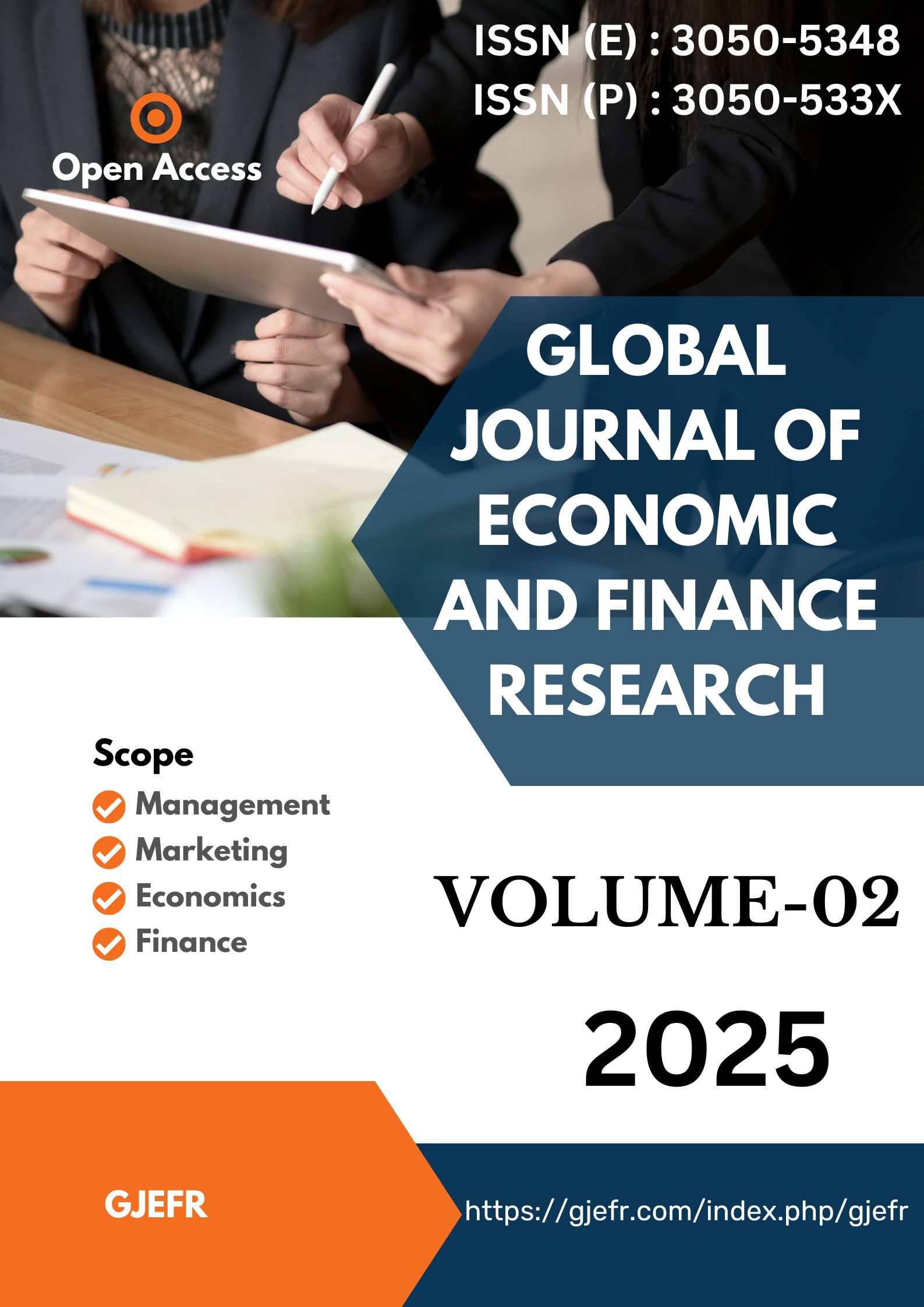Dutch Disease Nexus and Industrial Diversification: Evidence from Angola
DOI:
https://doi.org/10.55677/GJEFR/09-2024-Vol01E7Keywords:
Oil, Exchange rate, Dutch disease, and Industrial diversification.Abstract
The main objective of this study was to analyze the evolution of the main indicators of the Angolan economy between 2019 and 2023, which, in light of the literature on Dutch disease, can explain the situation of the level of industrial diversification in the period in question. Thus, a two-stage analysis was carried out: the first referred to the search for convergence between the behavior patterns of the curves of the volume of oil exports and the curve of exchange rate variation in the medium and long term; the second referred to the analysis of the trajectories of the curves of oil exports and the volume of production related to the manufacturing industry in the period between 2019-2023. Thus, the main results demonstrate, on the one hand, that both the volume of oil exports and the variation of the exchange rate had a convergent trajectory, both in the medium and long term and, on the other hand, that in the medium term (2019-2023), the volume of exports of the oil industry had an evolution dynamic inferring from that observed in the volume of the manufacturing industry. Finally, the conclusions drawn for the period analyzed support the premise that a preferential focus on exports originating from the extractive industry, combined with the observance of exchange rates that tend to appreciate, did not lead to direct deindustrialization to the detriment of the emergence of other industrial sectors besides oil, namely manufacturing.
References
Barbi, F., & Silva, A. L. (2008). O Petróleo do Pré-Sal: Os Desafios e as Possibilidades de uma nova Política Industrial no Brasil. Revista Pesquisa & Debate, 19.
BNA. (21 de 5 de 2024). Banco Nacional de Angola. Obtido de www.bna.ao:
Bresser-Pereira, L. C. (2007). Doença holandesa e sua neutralização: uma abordagem ricardiana. Revista de Economia Política, 28(1), pp. 47-71. Obtido de
https://bresserpereira.org.br/papers/2007/07.26.Doen%C3%A7aHolandesa.15dezembro.pdf
Bresser-Pereira, L. C., & Marconi, N. (2009). Doença Holandesa e Desindustrialização. Valor Económico. Obtido de https://www.bresserpereira.org.br/articles/2009/09.11.25.Doenca_holandesa_e_desindustrializacao.pdf
Frankel, J. A. (2012). The natural resource curse: A survey of diagnoses and some prescriptions. Commodity price volatility and inclusive growth in low-income countries,. Em P. S. Internacional Monetary Fund, Commodity Price Volatility and Inclusive Growth in Low-Income Countries (pp. 7-34). Washington: Internacional Monetary Fund, . Obtido de https://books.google.com.br/books?hl=pt-BR&lr=lang_en|lang_pt&id=LLkaEAAAQBAJ&oi=
fnd&pg=PA7&dq=FRANKEL,+J.+A%3B+(2012),+%E2%80%9CThe+Natural+Resource+Curse:+A+Survey+of+Diagnoses+and+Some+Prescriptions&ots=FuubGkW1KZ&sig=VajnfKsrWa1RT51siw9n68tgbEw#v=onep
IMF. (2023). International Financial Statistics: Metadata by Country. International Monetary Funf, International Financial Statistics, Washington - DC. Obtido de https://data.imf.org/regular.aspx?key=61545850
INE. (2023). Índice de Produção Industrial. Luanda: INE.
Liboreiro, P. R. (2024). Intermediate inputs in Dutch disease. Copper in Chile. Structural Change and Economic Dynamics, 1-11. doi:10.1016/j.strueco.2024.10.003
Mendonça, M. G., & F., A. R. (2015). Underdevelopment, Deindustrialization and Exploitation of Natural Resources: The Oil in the Subsalt Layer as the key or the Hindrance to National Development. Aurora, 8(2), pp. 145-176. doi:10.36311/1982-8004.2015.v8n2.4849
Nakahodo, S. N., & Jank, M. S. (2006). A Falácia da "Doença Holandesa" no Brasil. Instituto de Estudos do Comércio e Negociações Internacionais. Obtido de d1wqtxts1xzle7.cloudfront.net/40250591/A_FALCIA_DA_DOENA_
HOLANDESA_NO_BRASIL20151121-12633-yhtbe0libre.pdf?1448159020=&response-content-disposition=inline%3B+filename%3DA_FALACIA_DA_DOENCA_HOLANDESA_NO_BRASIL.pdf&Expires=1730792594&Signature=TFlo
Sanches-António, L. D. (10 de 5 de 2024). Free Zones in Countries Very Dependent on the Export of Raw Materials. World Journal of Research and Review, 18(5), 10-13. doi:10.31871/WJRR.18.5.11
Sanches-António, L. D. (4 de 6 de 2024). Theoretical Justification for the Implementation of Special Economic Zones: The Case of Luanda-Bengo Economic Zone in Angola. American Journal of Economics, 8(2), 1-14. doi:10.47672/aje.2073
WBG. (2023). Prosperity Data360. World Bank Group. Obtido de
https://prosperitydata360.worldbank.org/en/indicator/IMF+IFS+ENDE_XDC_USD_RATE
Downloads
Published
Issue
Section
License
Copyright (c) 2024 Global Journal of Economic and Finance Research

This work is licensed under a Creative Commons Attribution 4.0 International License.

